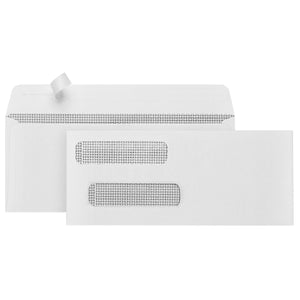There has been a boom in popularity in recent years for the standing desk. Traditional chair-and-desk combos are beginning to take a back seat as more people opt for a standing in the workplace. But does this mean standing desks are necessarily the best way to work? Let’s find out and put an end to the standing desk vs. chair debate.
The drawbacks of traditional desk chairs
The average office worker is in the office between 35 and 40 hours a week, and most of this is spent sitting in a desk chair. These 35-40 hours don’t include the time spent commuting or relaxing at home. Ideally during work hours, your desk chair should be at the perfect height for you to place both feet flat on the ground and keep your knees in line with your hips. However, most people move and fidget and it can feel unnatural to sit like this all day while also ensuring your neck remains straight and your shoulders don’t curve. Most of us are guilty at some point of slumping towards the end of the day which is why so many people complain of back pain.

There are so many types of desk chair on the market that claim to improve posture with their ergonomic designs it’s oftentimes forgotten that sitting itself could be the cause of discomfort.
An overly sedentary lifestyle can slow your metabolism and make you feel lethargic and tired. A simple, effective way to combat this is to vary your resting positions – specifically, to stand up.
Types of Standing Desks
The chief standing desk options are manual, electric, and standing desk converters.
The manual standing desk is the cheapest option but also the least convenient. To use a manual standing desk, you have to crank a lever to adjust the standing desk to the specific height you need. This extra exertion combined with manual standing desk height and weight limitations makes this a less convenient option than the electric standing desk, where you simply have to push a button.

Weight Limits
Many cheaper models for electric standing desks and cheap standing desk converters have weight limitations and may be inappropriate for use with heavier computer monitors.
An adjustable standing desk converter is a versatile option, since it’s a simple addition that sits on top of a standard desk. You can lower it and raise it depending on whether you want to sit or stand, and it isn’t as bulky or space-consuming as an electric or manual standing desk.
The most popular standing desk converters are those that are easy to operate, often through a lever or gas-operated system like those of a standard desk chair. Compared to the other options, they allow the most flexibility between sitting and standing and are relatively inexpensive. You can pick up a top-range converter for a price comparable to a low-budget electric adjustable height standing desk.
If you work somewhere with limited space like a cubicle or small office, corner standing desks are compact and have a separate tray for your keyboard.
Affordable standing desks are easy to come by, so don’t be put off by the volume of options available. IKEA has many adjustable models as well as an adjustable height laptop stand which is ideal if you haven’t yet decided whether or not standing for work is a viable option for you.
If you just want a quick roundup of the best standing desks, check out this resource outlining the best standing desks of 2020.
Standing Desk Chairs and Accessories
Standing desk chairs:
It may seem like an oxymoron, but there are seating options designed specifically for standing desks. They’re similar to tall stools and occasionally have a small backrest, which allow you to lean rather than sit so you aren’t counteracting the benefits of having a standing desk. When you sit in a standard desk chair, your knees are at 90 degrees and your hips are kept closed and rigid. Switching abruptly from sitting to standing can put pressure on your lower legs, feet, and back, but by using a standing desk stool, your hips remain open and your knees stay at a more relaxed angle. With less pressure comes less discomfort!
Cable management:
There are often many, many cables and wires criss-crossing underneath our desks. Ensure none get trapped or snagged when using an adjustable height standing desk by attaching a cable tray to the underside of your desk to keep cables tidy and out of the way.
Anti-fatigue mats:
Even with the most comfortable footwear, standing for long periods can be fatiguing, especially if on a hard surface. Anti-fatigue mats are made of flexible, ergonomic materials such as rubber or sponge to soften the pressure on your feet. Mats with a slight rise are particularly good for instep support.
Health Benefits
As mentioned above, sitting for too long can contribute to health problems. Research is still ongoing, but it has been found that those who regularly sit for long periods of time can be at risk for a number of health problems. Breaking up your sitting periods with standing can help with the following:
Reduced Risk of Sitting Disease
‘Sitting disease’ refers to several diseases exacerbated by a predominantly sedentary lifestyle. Type 2 diabetes, cardiovascular disease, and metabolic issues all have links to insufficient activity. Inactivity slows your metabolism down and affects your body’s natural ability to break down body fat, regulate blood sugar levels, and regulate blood pressure. Standing or taking short walking breaks to interrupt long periods of sitting can reduce this risk.
Minimized Back Pain
Back pain is a common ailment for anyone who spends long periods of time sitting. Constant sitting even in ergonomic chairs doesn’t sufficiently support your back, and can eventually lead to slumping of shoulders. Both of these factors lead to bad posture, which in turn causes muscle pain and even spinal problems.
“We are not saying you mustn’t sit down – that would be nonsense. But when you are sitting down for long periods, try to break it up. A common sense rule of thumb is to get up for five minutes every half hour.”
- Professor Stuart Biddle, University of Southern Queensland
Combat Lethargy
Being inactive for most of your day can cause fatigue and lethargy, which negatively affect your motivation and productivity at work. A few hours a day upright at a standing desk can boost your concentration and make you feel more alert and ready to work.
Lose Weight
You’re unlikely to see significant weight loss just from switching to a standing desk, since you only burn roughly 88 calories compared to only 80 when sitting. But standing keeps blood flowing and primes your body for action, so when lunchtime rolls around you’ll probably find yourself wanting to take a walk or do something active. This can help burn calories and keep your metabolism up, leading to gradual weight loss and healthier, more active lifestyle.
You’re Interested, But What Now?
If you’ve never worked at a standing desk before, you’re going to want to know some of the pros and cons associated. We’ve already covered the many health benefits, but let’s delve into the other benefits of working at a standing desk and identify potential pitfalls.
Standing Desk Pros and Cons |
||
| Pros: | Cons: | |
|
|
|
Ultimately, the benefits of standing to work outweigh the negatives. But when it comes to standing desk vs. chair, it is most often a matter of personal choice.
Healthwise, standing will do more good than sitting and even increase your productivity. But it can also be tiring for long periods, and can be a significant expense. Consider your specific preferences and physical limitations before investing in your preferred style of standing desk. And when you’re ready, take the plunge – your personal well-being should always be your top priority.
To ensure you don’t negatively impact your well-being, it’s important to employ some tactics for basic standing desk ergonomics, most of which we’ve already outlined. Investing in a mat and comfortable shoes will be kind to your feet, and ensuring you have the standing height of your desk just right will relieve your neck and shoulders. Remember, too, that just as with sitting, regular breaks and movement are a must so you don’t wear yourself out.
 For more informative articles about office supplies, subscribe to our email newsletter!
For more informative articles about office supplies, subscribe to our email newsletter!
Never fear, you won't begin receiving daily sales emails that belong in a spam folder. Instead, we promise a fun weekly roundup of our latest blog posts and great finds from across the web. And if you lose interest, it's always easy to unsubscribe with a single click.
For more information on office-related topics, check out our blog. If you have any questions or just want to talk shop, shoot us an email! Larry is always happy to help.














